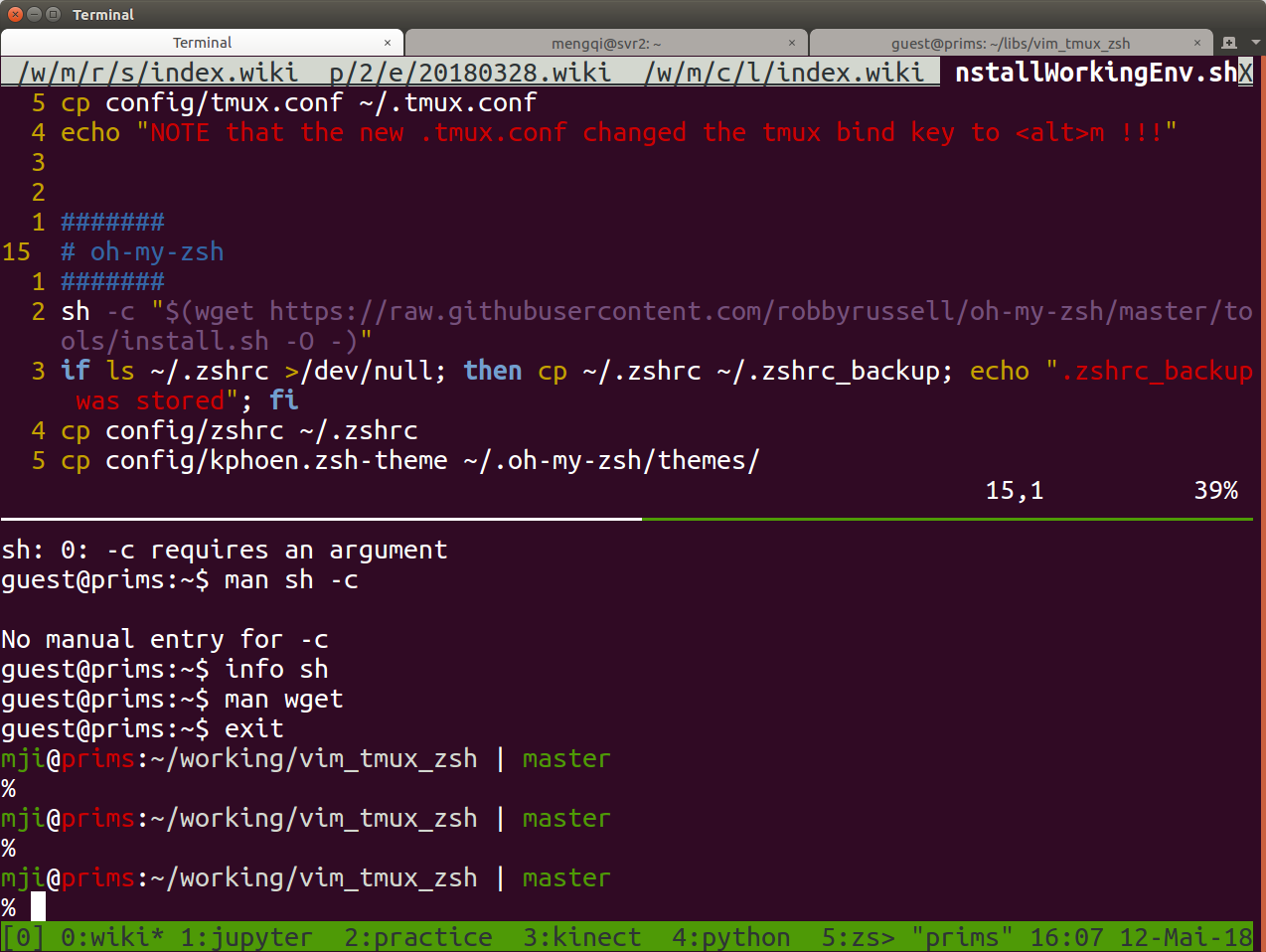- fast way to recover a ubuntu working environment: vim + tmux + zsh (never be afraid of configing a new account)
- install
sudo apt-get install vim tmux zshbash installWorkingEnv.shsudo chsh --shell=/bin/zsh <userName> # set zsh as default

- install vundle, which manage all the plugins
- 'vimwiki/vimwiki' 'scrooloose/nerdtree' 'tpope/vim-fugitive' 'VimIM' 'ervandew/supertab' 'rdnetto/ycm-generator' 'valloric/youcompleteme' 'luochen1990/rainbow' 'mrtazz/simplenote.vim' 'nathanaelkane/vim-indent-guides'
- find your own plugins in: https://vimawesome.com/.
- commands you must know:
:q quit current tab; :wq save and quit; :q! leave without saving:tabnew open another empty tab
- shortcuts you must know:
- jump among tabs:
gt/gT next/previous tab
- jump in file:
<ctrl> u / d half-page scroll up / down; gg / G goto head / end of the file
- goto / leave the insert mode:
i / <Esc>
- first step to master vim: run
vimtutor in terminal (not in vim).
- change the
<bind key> from <ctrl>+b to <alt>+m (easier for me)
- set to vi mode (can search / scroll / move use vi shortcuts)
- shortcuts you must know:
<bind key> + c/x create/delete new session<bind key> + <session index> / l jump to specific / previous session<bind key> + d detach from the current sessions. Attach the existing sessions: tmux attach
- use a custome-built scheme based on "kphoen" with 2-line layout, like:
(virtual / conda env)<userName>@<machineName>:<pwd, could be very long path> | <git_branch> <git status>
% <command>
- shortcuts you must know:
-
<ctrl><shift>+t open a new tab
<alt>+1/2/3... select the 1st/2nd/3rd/... tabF11 turn on/off full screen mode
